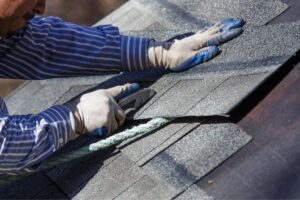Plumbing is the system of pipes, fixtures, and appliances that conveys water for various building uses. Plumbers in Cleveland Ohio require permits, inspections, and adherence to strict building codes and regulations.
Plumbers install, connect, and repair these systems. They interpret blueprints and building codes, use specialized tools to identify and troubleshoot problems and collaborate with construction teams.

The water supply is the infrastructure for the collection, transport, and treatment of fresh water to meet domestic, commercial, industrial, and public needs, including fire fighting. Water supply systems provide clean drinking water for homes and businesses. These systems typically include a network of pipes, tanks, pumps and valves that work together to deliver water from its source to consumers. The water supply is usually run by a municipal utility company, although privately owned systems exist as well.
The infrastructure for gathering, moving, and treating fresh water to meet needs for firefighting and other household, commercial, industrial, and public uses is known as the water supply. Water supply systems give homes and businesses access to clean drinking water. These systems usually consist of a system of pipes, tanks, pumps, and valves that cooperate to transport water from the source to the end user. Although privately owned systems also exist, municipal utility companies are typically in charge of managing the water supply.
The raw water needed for a water supply may be obtained from a surface water source such as lakes or rivers, or it may be extracted from underground aquifers through groundwater extraction. Most of these systems undergo a series of treatment steps to improve the quality and safety of the water, such as purification, disinfection, and fluoridation. The treated water is then stored in reservoirs, which can be located on the ground or aboveground as a water tower. Water may be delivered to homes and businesses through either gravity flow or by means of a pumping station.
The raw water required for a water supply can be drawn from subterranean aquifers by groundwater extraction, or it can come from surface water sources like rivers or lakes. To enhance the water’s quality and safety, the majority of these systems go through several treatment processes, including fluoridation, disinfection, and purification. After being treated, the water is kept in reservoirs, which can be underground or above ground like a water tower. Water can be supplied to residences and commercial buildings using a pumping station or gravity flow.
Water supply networks must be carefully designed to ensure a long service life and minimize energy costs. They are often complex systems with a high degree of automation, and they must be able to accommodate expansion and contraction of demand as the population grows or shrinks. The network must also be able to respond quickly to problems such as leaks or contamination of the water supply.
In most areas, the distribution system is operated by a municipal utility company, which is normally required to provide an adequate supply of water for its customers at a reasonable cost. Water utility companies must also comply with regulations set by the federal government and state governments regarding water quality, safety, and sanitation.
The pipes that make up a water distribution network are designed to have either a loop or branch topology in order to allow for the isolation of individual sections of the network without disrupting the whole system. This is important because it allows for the replacement or repair of a specific section of piping without disrupting all other users on that particular portion of the system.
The drainage system is the piping that carries waste water and sewage away from fixtures like sinks, toilets and tubs. It also takes care of wastewater from commercial and industrial processes. Drainage systems are not to be confused with sanitary sewer systems, which are different and take sewage and waste water to treatment plants.
Plumbing for drainage systems is a bit more complicated than that used for water supply pipes. It must be designed to dispose of waste quickly and safely. This is because if drainage pipes become blocked, the result could be disgusting, not to mention dangerous to health. Drainage pipes are pitched, or angled, downward so that gravity helps with the flow of waste. They then connect to a sewer line or septic tank. To prevent backflow, the pipe must also include a vent or trap. Vents allow air to enter the system, which maintains equal pressure and keeps the pipes from becoming blocked. Traps are curved sections of pipe located below drains that retain a small amount of water. This water acts as a seal, preventing foul odors and sewer gases from entering the house.
Drainage system plumbing involves some more intricate plumbing than water supply pipe plumbing. It needs to be built with safe and speedy waste disposal in mind. This is due to the potentially repulsive and health-threatening consequences of blocked drainage pipes. Pitch or angle drainage pipes are angled downward to aid in the flow of waste materials due to gravity. After that, they attach to a septic tank or sewer line. The pipe must also have a vent or trap to stop backflow. By allowing air to enter the system, vents help to keep the system’s pressure constant and prevent blockages in the pipes. Curved pipe sections called traps, which are found beneath drains, are used to hold back a small amount of water. By acting as a seal, this water stops
Drainage plumbing must be durable and strong enough to withstand the weight of waste and other debris. It must also be installed in areas that are easily accessible for maintenance and repair. A drainage plumber must be comfortable working in a variety of environments, heights and natural spaces. They must also be competent at installing and repairing a wide range of drainage products, including pumps, valves, drain traps and more.
Nursing staff should keep an eye on the color of drainage fluid. While it is often bloody or purulent at first, it should lighten over time. If it doesn’t, it may indicate a blockage or infection that requires attention. Since humans lack x-ray vision, repeated imaging of the drain may be needed to monitor its function and progress. If the drain becomes dislodged, it may require surgery to remove it. To avoid this, a competent drainage plumber should be able to perform a non-invasive inspection with the use of specialized CCTV cameras.
Waste disposal is the removal and proper management of non-reusable and non-recyclable materials. This includes the collection, transport, treatment, and deposition of solid wastes and sewage (wastewater). It also involves waste-related laws, technologies, and economic mechanisms. Several types of waste disposal systems exist. These include garbage disposal units, which grind up food and other domestic waste in the kitchen sink to enter the sewage system, and more elaborate ones, such as the InSinkErator (Google it) that sits below the drain pipe and disposes of food waste.
Depending on the type of waste and the applicable regulations, it may be disposed of in standard landfills, landfills that are specifically designed for hazardous wastes, or sent for incineration. Waste is often treated before being sent for disposal to reduce the risk of harm to humans and other animals. This may involve crushing, shredding, mixing, or adding chemicals to reduce the likelihood of harmful substances leaching from the waste into soil and water supplies.
Liquid waste disposal sites must be carefully chosen. If residents use well water, for example, a liquid waste disposal site should be far away from their water source. Otherwise, runoff from the disposal site could contaminate the well water supply and jeopardize people’s health.
It is not advisable to burn non-reusable or non-recyclable waste, as this will release harmful fumes and smoke into the atmosphere. Also, dumping wastes into rivers and canals or filling land depressions is not recommended, as this can lead to a host of problems, including soil degradation, contaminated groundwater, and harmful chemicals leaching into surface and subsurface water sources.


